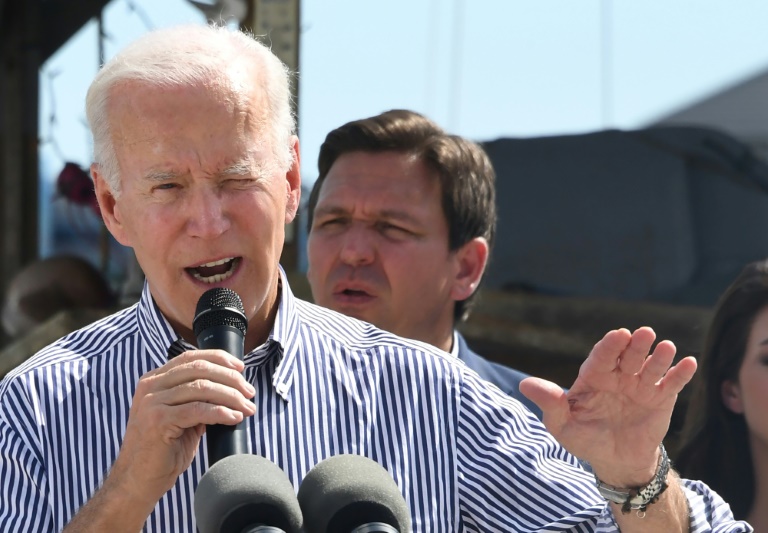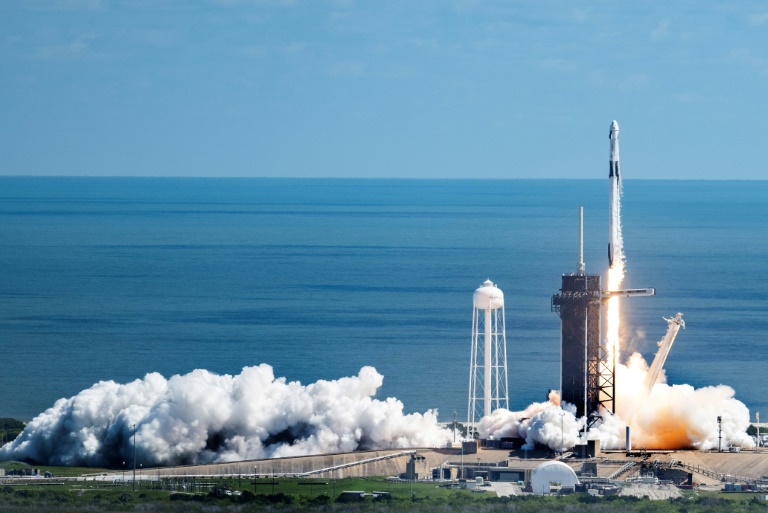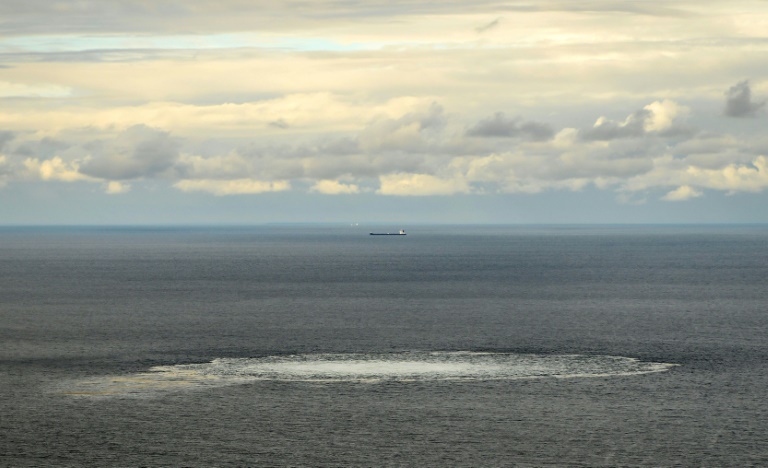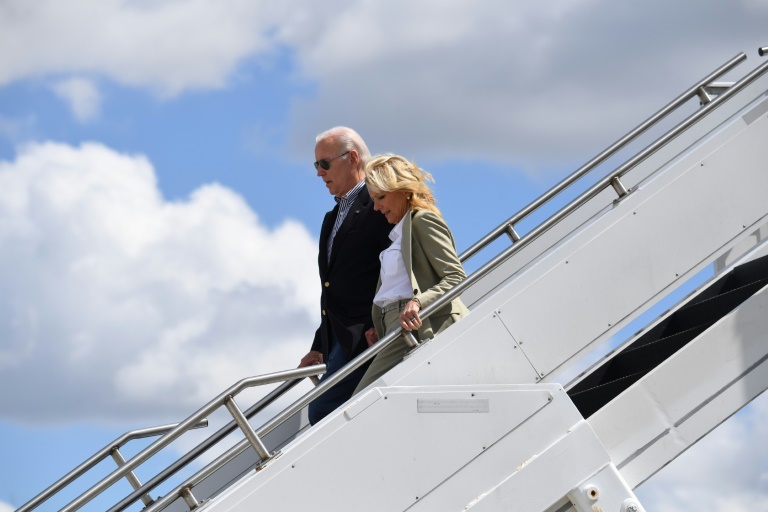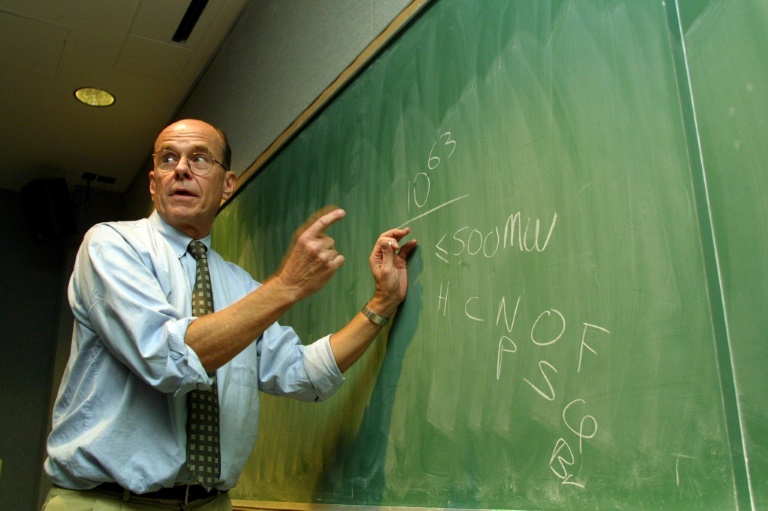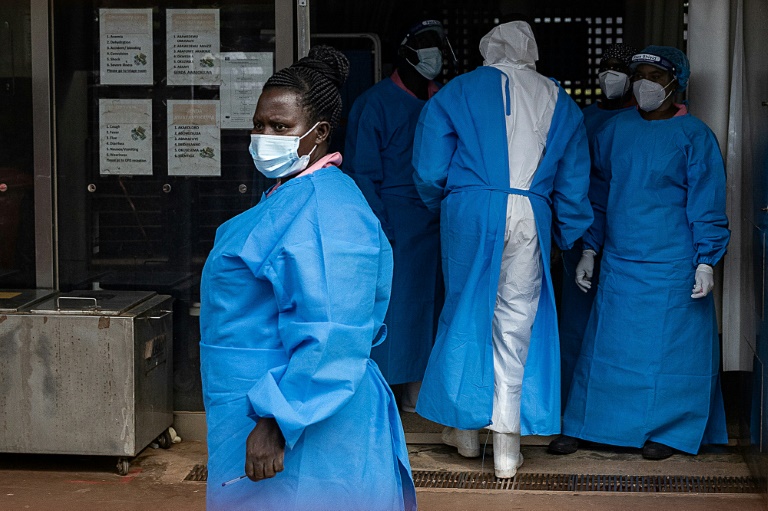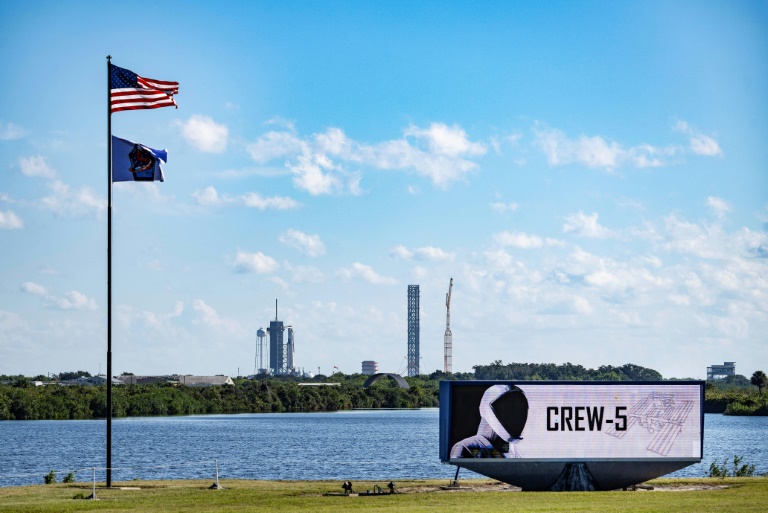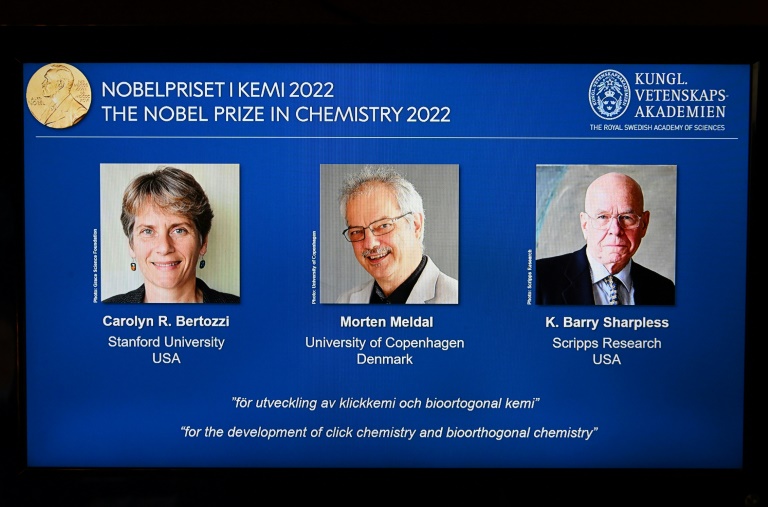Biden tours Florida hurricane clean-up zone — and opponent's territory
US President Joe Biden and Republican Florida Governor Ron DeSantis observed a political truce during the visit to areas hit by Hurricane Ian
President Joe Biden flew over the devastation left by Hurricane Ian in Florida on a politically charged trip Wednesday that marked a truce with bitter Republican critic and potential 2024 opponent, Governor Ron DeSantis.
The Democrat, accompanied by First Lady Jill Biden, boarded a helicopter at Fort Myers for an aerial inspection of the havoc wreaked in one of the worst storms ever to hit the country.
“Everything — this historic and titanic, unimaginable storm ripped it to pieces,” Biden said in a speech after witnessing the destruction. “You’ve got to start from scratch.”
Authorities say at least 76 people — more than 100 according to US television networks citing local officials — died in Hurricane Ian.
The Category 4 storm flattened whole neighborhoods on the Sunshine State’s west coast, knocking out power for millions of people, then weakened before tearing into South Carolina and up the East Coast.
For Biden, who visited hurricane-hit Puerto Rico on Monday, the Florida trip also had an inescapable political dimension, taking him into the stronghold of both DeSantis and Biden’s scandal-plagued predecessor in the White House, Donald Trump.
The Democrat, who says he wants to seek a second term despite already being the oldest man ever in the job at 79, could realistically end up facing a rematch with Trump in two years or a challenge from the up-and-coming DeSantis.
DeSantis has been a caustic critic, as he builds his brand of muscular right-wing politics in a bid to replace Trump as the biggest name in the Republican party. Biden has returned fire, painting DeSantis as part of what he says is an increasingly extreme right.
The hurricane, however, has prompted a ceasefire, with phone calls between the two men and acknowledgement from DeSantis that the federal government was quick to provide assistance.
“Mr President, welcome to Florida. We appreciate working together,” DeSantis said at the damaged waterfront neighborhood of Fisherman’s Pass.
Biden returned the warm words, saying DeSantis had “done a good job.”
“We have very different political philosophies, but we’ve worked hand in glove.”
– ‘Above politics’ – for now –
Biden’s main goal, White House Press Secretary Karine Jean-Pierre said, is to check that “the people of Florida have what they need.”
In addition to getting briefings from federal emergency management chief Deanne Criswell and DeSantis, Biden met small business owners and local storm survivors.
In his remarks he emphasized togetherness — something rarely celebrated in today’s gladiatorial Democrat vs Republican politics.
“This is the United States,” he said in his remarks, stressing the word “united.”
Biden’s visit to Puerto Rico earlier in the week covered similar ground, although there he was updated on recovery from Hurricane Fiona, which hit the island last month.
Again, Biden stressed the unity message, telling the Caribbean territory — which often feels overlooked by the mainland and the federal government — that “all of America’s with you.”
The disagreements with DeSantis, however, are many and will likely resurface as soon as Floridians recommence a semblance of their previous lives.
DeSantis opposed Biden on his Covid-19 policies during the pandemic, accusing the president of overreach. He has likewise made himself the standard bearer of the conservative backlash to growing tolerance for LGBT issues — something Biden has championed.
Another right-wing Florida Republican who often comes under fire from Biden, Senator Rick Scott, was also present for the visit. But again, Biden held his tongue.
The visit was “above politics,” Jean-Pierre said.
“There will be plenty of times, plenty of time to discuss differences between the president and the governor. Now is not the time.”

